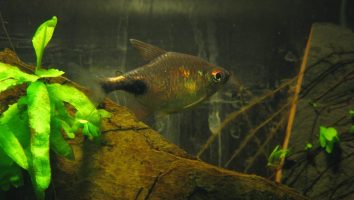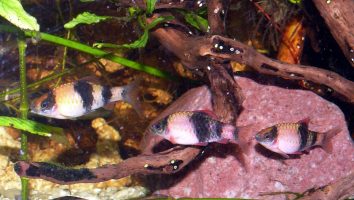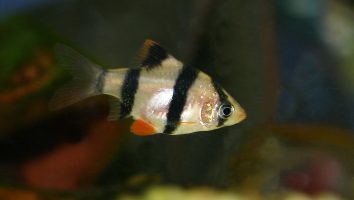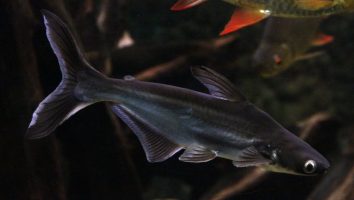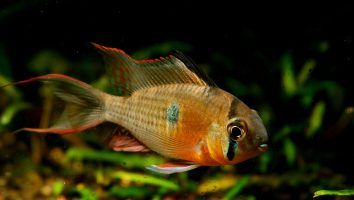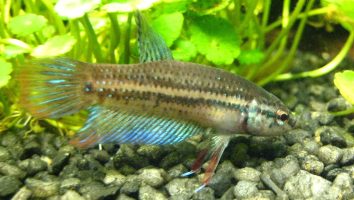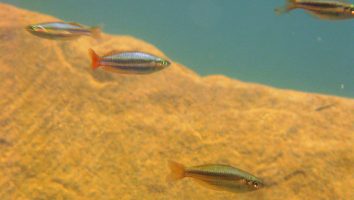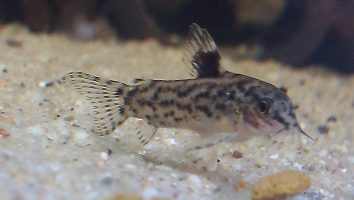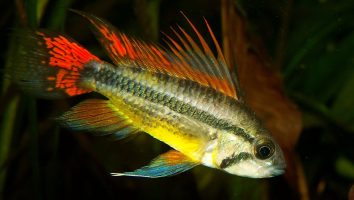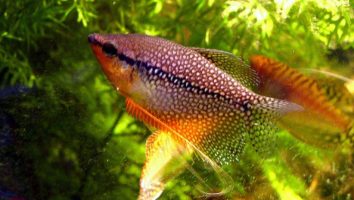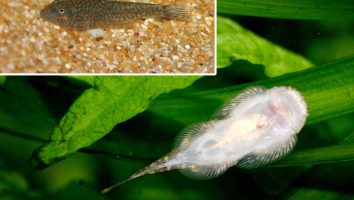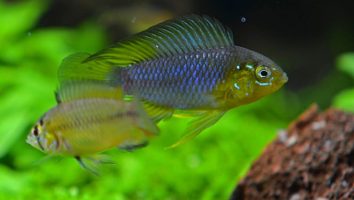Spotted Gars are one of the coolest freshwater fish you can get.
They’re unique, interesting, and relatively easy to care for… as long as you know what you’re doing.
Unfortunately, there’s a lot of misinformation out there about these guys. We’ve seen all sorts of crazy suggestions on care and diet that just don’t work.
So we made this guide to set the record straight. In it, you’ll learn everything you need to know about Spotted Gar care. From tank size and diet, to tank mates and breeding. It’s all here!
Table of contents
Species overview
Spotted Gar (Lepisosteus oculatus) are a freshwater fish that can be found in slow-moving rivers and lakes throughout the southeastern United States.
They have a long, snake-like body and can grow to be over two feet in length. These fish are predators and primarily eat other fish, although they will also consume insects and crustaceans.
Spotted Gar are not a popular choice for aquariums due to their large size and predatory nature. However, they can be kept in captivity if their tank is large enough and they are not kept with smaller fish.
Appearance
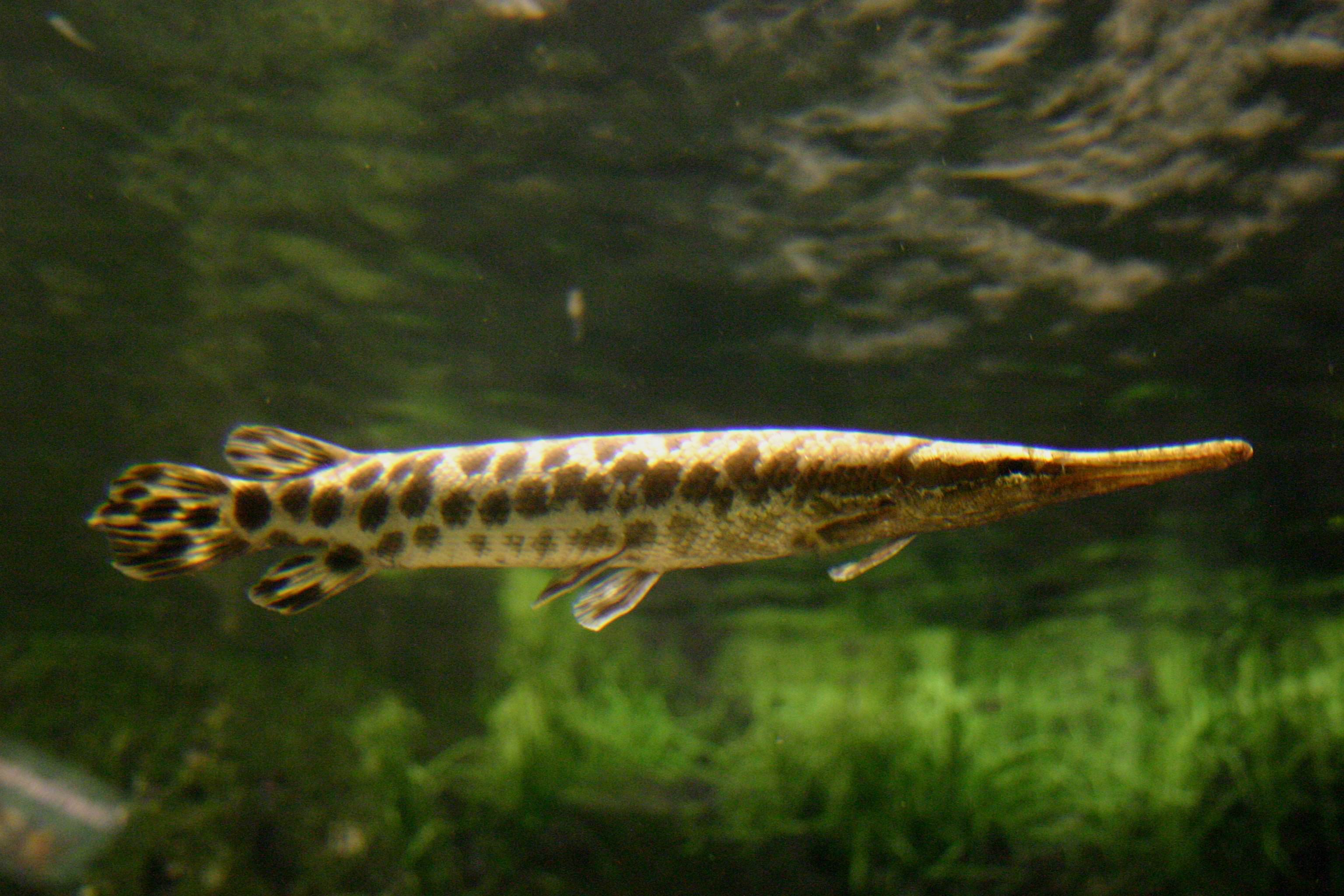
The Spotted Gar is an impressive-looking fish that can reach up to five feet in length! They have a long and slender body that is covered in large, hard scales.
The coloration of this fish is rather unique and can vary depending on the water conditions and food availability. The body is usually a olive green or brown with large dark spots that cover the entire fish.
The belly is usually a lighter color, sometimes white or yellow. The fins are also usually a light color, often times clear or white.
The dorsal fin is rather tall and starts about halfway back on the body. This fin has a very jagged edge and can be used as a weapon against predators.
The anal fin is also tall and jagged, but it starts closer to the tail. The pectoral and pelvic fins are small and located near the head of the fish.
The tail is forked and used to propel the fish through the water.
Lifespan
Spotted Gar have a lifespan of around 15 to 20 years. This is actually quite long for a fish, especially one that gets as large as they do.
As with any other animal, there are a number of things that can impact the lifespan of a Spotted Gar. Poor water quality, for example, can lead to a number of health problems that can shorten their life.
Stress is also a big factor. If these fish are constantly being harassed by tank mates or if they’re not getting enough to eat, it can lead to a shortened lifespan.
Size
Spotted Gar can grow to be quite large, with some individuals reaching lengths of up to 4 feet! However, the average size for these fish is between 2 and 3 feet.
Tank
Tank Size
The recommended minimum tank size for a Spotted Gar is 100 gallons. This is a fish that gets big, fast. If you start with a smaller tank you may find yourself having to upgrade sooner than you’d like.
As with most fish, the larger the tank the better. If you have the space and the resources, a 150 gallon or even a 200 gallon tank would be ideal for a Spotted Gar.
Water Parameters
Spotted Gar are a freshwater fish that come from large rivers and lakes in North America. They have a long and slender body with a greenish-brown coloration and spots that are darker in color.
Spotted Gar are a predator fish and will eat just about anything they can fit in their mouth. They are known to eat other fish, frogs, snakes, and even small mammals.
The water parameters you need to maintain for Spotted Gar are as follows:
- Water Temperature: 60°F to 86°F
- pH Levels: 6.0 to 8.0
- Water Hardness: 2 to 12 dGH
- Alkalinity Levels: 4-8 dKH
What To Put In Their Tank
Spotted Gars are one of the most unique freshwater fish that you can keep. They’re not often seen in home aquariums, but they make for an interesting addition.
When it comes to setting up the inside of their tank you’ll want to stick with a few key things.
First, the substrate should be a dark color. This will help them feel more comfortable and make it easier for them to blend in (they’re a shy species).
Second, include some pieces of driftwood and rocks. These will create hiding spots for your fish and help reduce their stress levels.
Third, plants are a must. We recommend going with floating plants since they’re less likely to be disturbed by your gar. Hornwort, water wisteria, and java moss are all great choices.
And finally, don’t forget to include a filter! These fish are messy eaters and produce a lot of waste. A quality filter will help to keep the water clean and help your fish stay healthy.
Common Diseases
There are a few diseases that you should be aware of if you’re thinking about keeping Spotted Gar.
The most common disease that these fish experience is a skin condition called “blotchiness.” This is a result of poor water quality and will present itself as dark, blotchy patches on the skin of your fish.
If left untreated, this can eventually lead to ulcers and open wounds. Thankfully, this is easily avoidable by simply maintaining clean water conditions in your tank.
Another disease to keep an eye out for is “swim bladder disease.” This is a condition that affects the swim bladder, and as a result, your fish may have trouble swimming properly.
This can be caused by a variety of things, but the most common is constipation. This can be avoided by simply feeding your fish a diet that is high in fiber.
The best way to prevent disease in Spotted Gar is to maintain clean water conditions and to feed them a healthy diet. If you do this, you shouldn’t have any problems!
Behavior & Temperament
Spotted Gar are one of the few fish on this list that are actually predators. They’re not the type to go after other fish in your tank. But, they will go after smaller prey like insects, crustaceans, and smaller fish.
Spotted Gar are relatively shy fish, so they tend to stick to themselves. They’re not the type of fish that will interact with their tank mates often. In fact, they’re more likely to hide than to swim out in the open.
Even though they’re shy, they’re not the type of fish that gets easily stressed. So, you don’t have to worry about them getting sick if they’re not getting along with the other fish in your tank.
Tank Mates
Spotted Gar are predators, so they need to be kept with other fish that can hold their own. These fish are not to be trifled with, and they will eat anything they can fit in their mouths.
That said, they can be kept with other fish as long as you take care to choose the right tank mates. The fish need to be too large to be eaten and also able to defend themselves.
Here are some examples of good tank mates for Spotted Gar:
- Alligator Gar
- Arowana
- Pacu
- Plecostomus
- Oscar
- Green Terror
- Jack Dempsey
- Flowerhorn
Breeding
Spotted Gar are one of the easier fish to breed in captivity. They are egg-scatterers, so no parental care is needed once spawning is complete.
To increase your chances of success, start by setting up a large breeding tank. It should hold at least 100 gallons of water. Then, add some live plants and some hiding places. Driftwood pieces work well.
The water conditions are important, too. Keep the temperature between 70 and 75 degrees Fahrenheit. The pH should be between 7.0 and 8.0.
When ready, add two females for every male. Remember: Males have the more pronounced spots.
Feed the fish plenty of high-quality foods. Then, begin changing about 50 percent of the water. That should trigger spawning.
You’ll know you’re successful when you see the female deposit eggs on the plants or driftwood. After she does that, the male will guard them diligently.
In about ten days, the eggs will hatch. You can move the babies into a nursery tank to improve their odds of survival. Feed them mashed peas and other green vegetables until they’re ready to join the adults in your main tank.
Conclusion
The Spotted Gar is an amazing fish that is perfect for the more experienced fish keeper. They are very unique in both their appearance and their behavior.
If you are looking for a fish that is a little bit different than the others, the Spotted Gar is definitely the fish for you. They are not the easiest fish to take care of, but they are definitely worth the effort.

